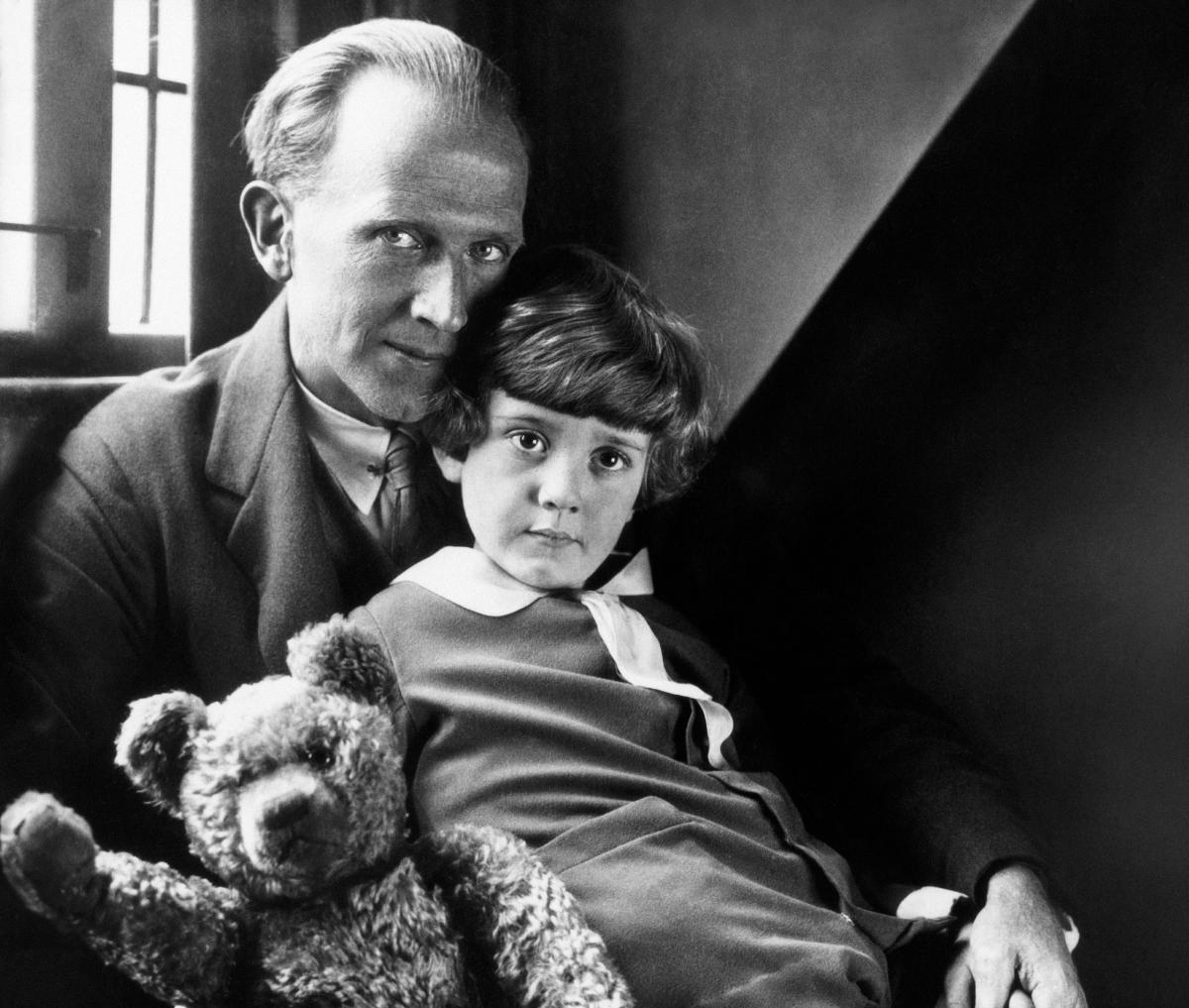In 1916, A. A. Milne, renowned author of Winnie-the-Pooh (1926), fought in one of the bloodiest battles of World War I: the Battle of the Somme. Milne was injured and returned home to his wife with severe PTSD. While at home, he was triggered by buzzing bees, thinking they were whizzing bullets, and popping balloons, mistaking them as cannons firing. Milne was reinvigorated by the birth of his son, Christopher Robin Milne, in 1920. However, still suffering from severe PTSD, he embarked on a journey firstly to offer a lighthearted distraction from such dark times and secondly to explain to his son through his writing the dificulties of war, a complex and gruesome topic. Milne began his short story collection, Winnie-the-Pooh, basing the central characters on his son Christopher and his stuffed animal. Milne's stories, paired with Ernest Shepard's lovely illustrations, tell a sweet tale about a kind-hearted bear who spends his life eating "hunny," rescuing his friends, and cheering up grumpy Eeyore. This book easily fits into the category of entertaining and nuturing children's literature, as it is a collection of tales full of cheer, friendship, and love, offering a war-time repreive. However, through adorable, relatable characters, Milne and Shepard's work also provides a way for children to process topics such as mental illness, fear, and hardship.
"The writer A. A. Milne pictured with his son, Christopher Robin Milne, and his stuffed bear, Winnie-the-Pooh, in 1926," Photograph by Pictorial Press Ltd / Alamy.
In this first plate, A. A. Milne sits with his son, Christopher, and stuffed animal Winnie-the-Pooh, in 1926. Winnie is named after a Canadian black bear at the local zoo, Winnipeg, whom Christopher was fond of. Some speculate that Milne saw himself in the bear; black bears were used as a mascot by the Canadian Expeditionary Force in WWI. The bear himself was said to be very shy and solitary, similar to how Milne felt after the war. Drawing Winnipeg into the story, reincarnated as Winnie-the-Pooh, was Milne's way of placing himself next to his son, Christopher, throughout their journies in the Hundred Acre Wood, where fictional Christopher and his friends Piglet, Eeyore, Tigger, Rabbit and others spend their days. The Hundred Acre Wood is based on Ashdown Forest, close to where Milne lived in East Sussex.
E. H. Shepard, "The Bees are Getting Suspicious" (1973), for Winnie-the-Pooh (1926), by A. A. Milne, Estate of E. H. Shepard / Victoria and Albert Museum, London.
"Hunnybees" are a consistent antagonist throughout Winnie-the-Pooh. It is hypothesized that this was Milne's way of explaining his real-life trigger of buzzing bees to his young son. Shepard's cheerful drawings of simple little bumblebees simplifies the story for young readers to digest. While not scary to Pooh, the bees are curiously annoying and a recurring theme throughout the stories. In this second plate, an illustration by Shepard, Pooh has covered himself in mud to look more like a storm cloud so that the bees will leave him alone. These types of endearing little stories, paired with the drawings, provide a bit of lighthearted humor while simultaneously making it easier for children to understand more complex themes such as PTSD.
E. H. Shepard, "Eeyore and Piglet" (1973), for Winnie-the-Pooh (1926), by A. A. Milne.
Many argue that Eeyore embodies depression. If Milne does indeed convey complex post-war topics such as PTSD and depression through his Winnie-the-Pooh tales, Eeyore is an easy way to illustrate to children how not everyone is happy all of the time. Milne simplifies the overhwelmingly complex topic of mental illness with grumpy Eeyore (seen in this third plate), who lives in "Eeyore's Gloomy Place," is sad when he loses his tail, and assumes he isn't wanted. Milne's lighthearted interpretation of consistent gloominess, paired with Shepard's drawings of dreary old Eeyore, brings humor and enjoyment to an otherwise potentially miserable situation.
E. H. Shepard, Early Pencil Version of “Help a Horrible Heffalump,” circa 1926, The E.H. Shepard Archive, University of Surrey.
Various scholars classify Piglet as having Generalized Anxiety Disorder (GAD). As a war veteran and a self-described shy and solitary person, Milne likey also suffered from some form of social anxiety or nervousness. Thus, Piglet allowed Milne to creatively express nervousness and anxiety in a way that is extremely accessible to young kids such as his son. Milne gently and kindly emphasizes some of these traits in nervous Piglet, but they are played out in an endearing manner rather than in a clinical or diagnostic way. Piglet's sweet friends like Pooh and Christopher are also always there to comfort him, without judgement, when he is scared or nervous, as seen in plate four.





